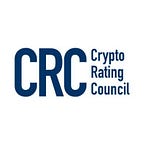Crypto Rating Council: More About the Framework
We have received a tremendous response to the announcement of the Crypto Rating Council and the release of the asset ratings. Many are excited by efforts by industry to provide enhanced clarity and industry-led securities law compliance tools. We welcome this support, interest, and many prospective new members. We are happy to provide additional details about our Framework and scoring methodology in response to questions we’ve received after launch.
As discussed on our website, our Framework is based on the Howey test — a four prong analysis that is used to determine when a given asset or instrument may be an investment contract, and therefore a security. If any one of the prongs is not met, the Howey test as a whole fails for that particular asset, meaning it would not be an investment contract. The digital asset analysis Framework reflects an effort by the Council to apply existing case law and guidance published by the SEC in a systematic and objective way to the different prongs of the Howey test, weight dozens of different factors, and apply a scaling methodology to arrive at a score on a 5 point scale. A 1 is intended to signal that there are fewer factors present while a 5 signals there are more factors present. Understanding that there may be greater or fewer factors present is intended to be a tool to help members make individual determinations of the potential legal classification of a given asset, but the score is not dispositive. Some assets with high scores may have many characteristics associated with securities but there still may be persuasive legal reasons to conclude differently.
Following are more details about certain aspects of the Framework:
Scaled Scoring. The Howey test is 4 prongs but should not be confused with the scaled scoring of the Framework between 1 and 5. For example, a score of 4 should not be read as meaning that 4 prongs of the Howey test have been met. Assets with the highest ratings often have strong reasons suggesting that they do not meet all four prongs of the Howey test, and may not be deemed to be securities. Indeed, the distinction between 4 and 5-rated assets is one of the most important aspects of the scorecard because it establishes that although some assets may appear to have many security-like characteristics there may still be valid reasons to conclude they do not meet the Howey test. The fact that a given rating is published at all generally means that one or more members of the Council believes that the digital asset is not a security.
Increased gradation at the higher end of the spectrum. Our Framework results in any of the following scores: 1, 2, 3, 3.5, 3.75, 4, 4.25, 4.5, 4.75, 5. Our scorecard allows for enhanced gradation (i.e. greater number of possible scores) between 3.5 and 5, which reflects our view that even assets that share many characteristics of securities can still have important differences that tend to distinguish them from securities and from one another. For example, our Framework assigns a score of 4 when an asset appears to have a certain number of characteristics relevant to the analysis under each prong, but those indicators are not conclusive. A score of 4.25 is assigned when an asset appears to have a certain number of indicators under three Howey prongs and relatively stronger indicators under the remaining prong (but, again, those indicators are not conclusive), and so on.
Not a percentage test. The score does not represent a percentage test. For example a score of 4 doesn’t mean that there is an 80% chance of classification as a security. It also does not express a view that it is necessarily “more likely than not” that a digital asset at a certain score is a security. It simply expresses the relative presence (or absence) of characteristics relevant to the Howey analysis.
Not a legal determination. No score represents a determination by the Council or any member that a digital asset is or is not a security. It has not been endorsed by the SEC or any other regulatory authority. The Framework does not create any new law or policy, and ultimate authority to determine what may or may not be a security remains with the courts. Scores are used by members of the Council as a reference point. No score reflects a determination by any particular member of the Council that it will or will not transact in a particular digital asset. Each individual member makes its own legal and commercial assessments.
Dynamic Nature of the Analysis. The scores reflect the best understanding of the Council and are subject to change based on additional facts and changes to facts and circumstances. The Council plans to revisit scores periodically and for significant milestone events. The Council also plans to continue to refine its methodology to seek to make sure it is fully capturing the diversity of digital assets and regulatory and judicial developments. We generally intend to announce changes to prior published scores or to the Framework.
Public Disclosure & Developer Input. We have not yet publicly released the Framework because the members, working closely with outside counsel and other experts, continue to refine it. We expect to make a version of the Framework available for publication at a future date. Our hope is that the Framework will provide a useful resource to industry and developing teams when it is ready for publication. We continue to welcome input from developer teams whose assets the Council is considering and we intend to reach out proactively to developer teams as we publish more assets. Any developer with information about an asset we review should feel free to contact us here or through any member firm.
We welcome all the interest received, and look forward to continued comments and suggestions.
